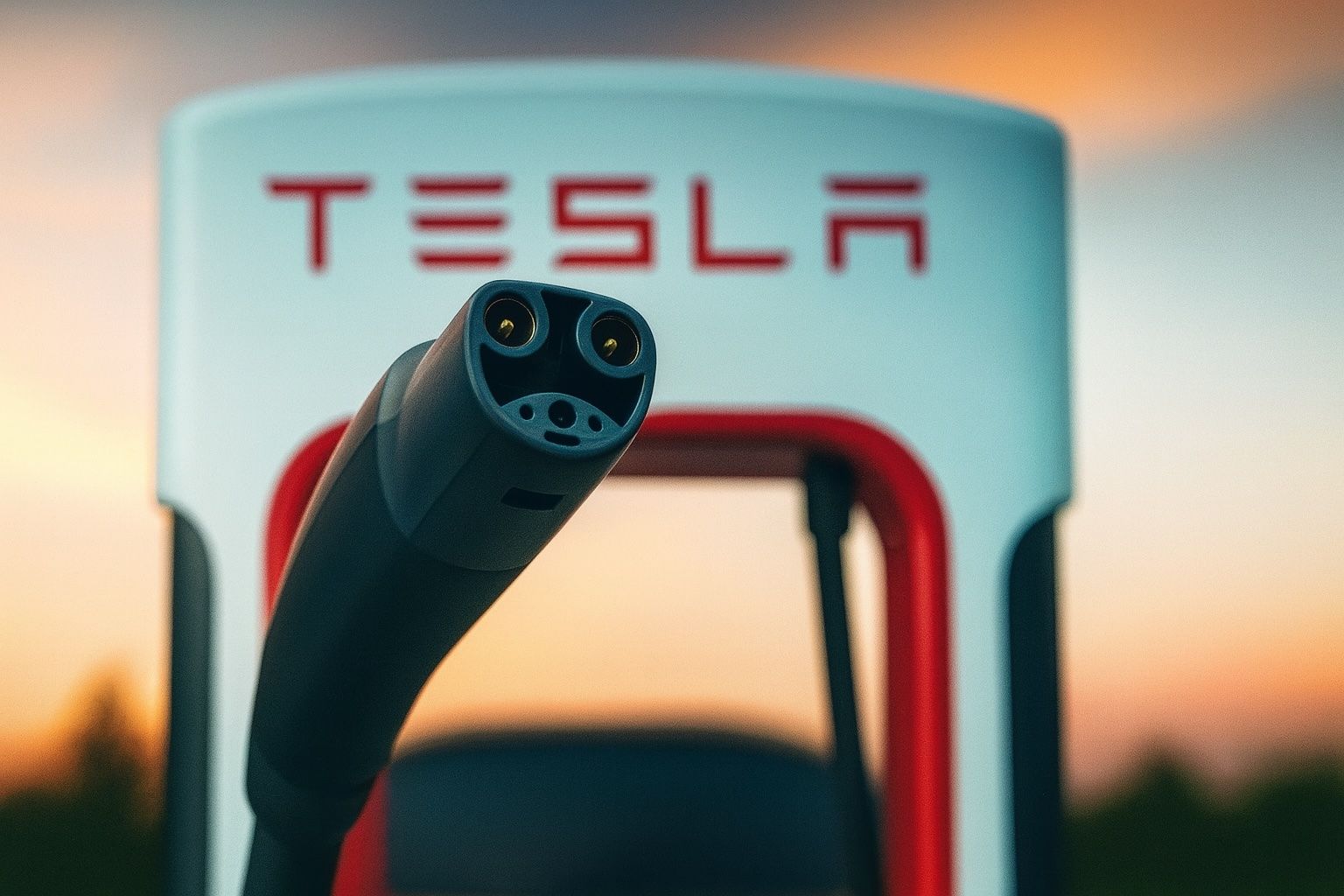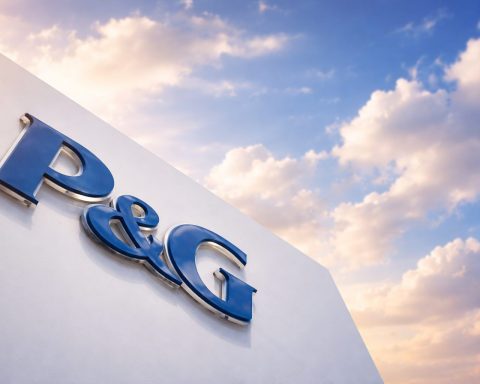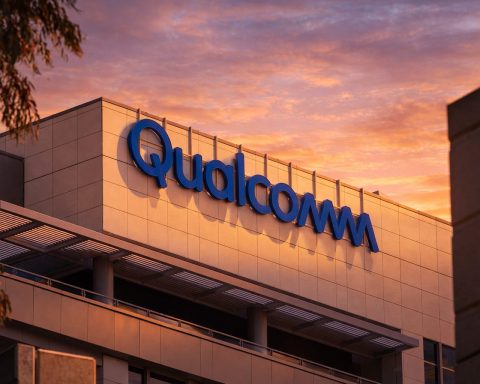- Stock near highs: Tesla shares closed last week around the mid-$430s, slightly off their 52-week peak (~$453 on Oct. 6) after a volatile October. TSLA is still up about 80% year-on-year, vastly outperforming the S&P 500’s ~17% gain [1] [2].
- Record sales boost: Tesla delivered 497,099 vehicles in Q3 2025 – a quarterly record, about 7.4% higher than last year and far above Wall Street’s ~443k forecast [3]. A late-September rush to beat an expiring $7,500 EV tax credit fueled the blowout sales [4], raising questions about demand going forward.
- “Affordable” models debut: On Oct. 7 Tesla rolled out cheaper Standard Range versions of the Model Y and Model 3 (starting around $39,990 and $36,990) by trimming features [5]. CEO Elon Musk pitched this move as making EVs more accessible, but the modest $4–5k price cuts disappointed investors – TSLA stock slid roughly 4% after the announcement [6].
- Wall Street divided: Analysts remain split on Tesla’s valuation. Star bulls like Wedbush’s Dan Ives maintain $600 price targets, and Morgan Stanley sees ~$410, yet the average 12-month target is only ~$364 [7] – implying some downside. Roughly half of analysts rate TSLA Hold or Sell, citing its lofty ~$1.4 trillion market cap.
- Earnings on deck: Tesla reports Q3 earnings this Wednesday (Oct. 22) after market close, a key catalyst ahead. Consensus expects Tesla’s quarterly profit to drop over 20% year-on-year, though some (e.g. Wells Fargo) forecast an earnings beat despite lowered expectations [8]. Investors will scrutinize margins after recent price cuts.
- Musk’s pay plan under fire: Tesla’s governance is in focus as well. On Friday, proxy adviser ISS urged shareholders to reject Elon Musk’s proposed $1 trillion pay package, calling it excessive [9]. The unprecedented plan – potentially the largest CEO compensation ever – hinges on Tesla hitting a staggering $8.5 trillion valuation within a decade [10], a target drawing serious scrutiny.
Stock Volatility and Recent Performance
Tesla’s stock has been on a rollercoaster in October, oscillating with every new headline. After surging to an intraday high near $453 earlier this month, TSLA pulled back and ended last week around $439 per share [11]. In the past week alone, the stock whipsawed: it jumped ~5% on Oct. 13 (to ~$435.90) amid a broad market rally, then dipped ~1.5% on Oct. 14 to about $429 as sentiment reversed [12]. Such swings have mirrored the wider market – a relief bounce in tech stocks on Oct. 13 (S&P 500 +1.6%) was followed by a slump the next day (S&P –1.3%) on renewed U.S.–China trade jitters, and Tesla’s share price echoed those moves [13].
Year-to-date, Tesla remains a standout performer. The stock has roughly doubled from its levels a year ago (about +80% YoY) even after recent pullbacks [14]. This far outpaces the broader market, thanks in part to optimism around Tesla’s technology and growth prospects. However, its $1.4–$1.5 trillion market capitalization – and steep valuation of around 250× forward earnings – has prompted debate about how much good news is already “priced in” [15]. Traders are also watching macro signals closely. Hopes that the Federal Reserve might start cutting interest rates by year-end have been a tailwind for high-growth names like TSLA [16]. Conversely, any flare-up in U.S.–China tensions or new trade barriers tends to spook global markets – and could weigh on Tesla, which has significant sales and production exposure in both countries [17]. (Notably, U.S. policy moves late last week – such as expanded EV production credits and new 25% tariffs on imported trucks starting Nov. 1 – underscore that geopolitics remain a wildcard for the auto sector [18], even if Tesla itself is less directly affected by truck duties.)
Record Q3 Sales, but Tax-Credit Hangover?
Tesla’s Q3 delivery figures, released in early October, smashed expectations. The company reported 497,099 vehicles delivered in Q3 2025, an all-time high for a quarter [19]. This number blew past analyst forecasts (around 441k–443k) by roughly 12% [20] and even exceeded the year-ago quarter by about 7.4% [21]. Management and analysts largely attribute the surprise bump to a one-time demand pull-forward: thousands of U.S. buyers rushed to purchase Teslas in September to claim a $7,500 federal EV tax credit before it expired on Sept. 30 [22]. Tesla aggressively promoted discounts and financing deals to capitalize on that deadline, effectively “borrowing” sales from the future.
Now the question is whether this sales “boom” will be followed by a Q4 “bust.” Many experts urge caution, noting that the Q3 spike may have been an anomaly. “The $7,500 credit definitely…pulled forward demand this quarter,” observed Ken Mahoney, CEO of Mahoney Asset Management, adding that the incentive’s expiry “could leave a U.S. demand gap in the fourth quarter.” [23] Elliot Johnson, CIO at Evolve ETFs, echoed skepticism: “I’m skeptical that this will be sustainable and I think we could see a soft couple of quarters,” he said, warning not to assume the record deliveries will persist [24]. Even Tesla’s own management has braced investors for turbulence – Elon Musk told shareholders back in July that the company faces “a few rough quarters” now that subsidies have waned, before the benefits of self-driving software and other innovations kick in [25].
On the bright side, Tesla’s blockbuster sales underscore its underlying demand and also bolstered other business lines. The company’s energy division notched a record quarter as well, deploying 12.5 GWh of battery storage in Q3 – more than in all of 2024 – highlighting progress in Tesla’s push beyond cars [26]. These extra revenue streams (like solar and grid batteries) provide a buffer as the auto segment faces pricing and incentive headwinds. Furthermore, if interest rates indeed start to fall in coming months, cheaper auto financing could give Tesla (and other automakers) a boost heading into 2026.
Still, all eyes are on profitability. Tesla cut vehicle prices significantly in recent quarters to drive volume, and its auto gross margins had slipped to the mid-single digits even before the latest delivery surge [27]. The upcoming Q3 earnings report will reveal whether that record volume translated into healthy earnings – or if margins were squeezed thin by all the discounts. “Investors will watch if the delivery boom translated into solid revenue and profit, or if margins were squeezed by heavy discounts,” noted one Reuters analysis of Tesla’s situation [28]. In short, the company may have proven it can sell nearly half a million cars in a quarter – but now it must show it can do so profitably without the crutch of expiring credits.
New “Affordable” Models and Market Challenges
Beyond raw sales numbers, Tesla made headlines this month by introducing cheaper trims of its two best-selling models – a strategic move to shore up demand. On October 7, the company unveiled new “Standard Range” versions of the Model Y crossover and Model 3 sedan in the U.S., followed by a similar launch in Europe on Oct. 10. The Model Y Standard now starts around $39,990 (and the Model 3 Standard about $36,990) [29], roughly $5,000 less than the previous base models. To hit these lower price points, Tesla omitted or downgraded certain features – for example, the Standard Range editions have slightly smaller battery packs (with still ~320 miles range), no Autopilot “Autosteer” capability, and simplified interiors [30].
Elon Musk framed these trims as a step toward making Tesla ownership possible for more consumers (the CEO has often said a true sub-$30K EV is the end goal). However, the market’s reaction suggests investors wanted something more radical. The price cuts were “modest” in analysts’ eyes – “Disappointed” is how Wedbush’s Dan Ives described his reaction, noting the new variants are only about $4–5K cheaper than the prior base models [31]. Indeed, the announcement was met with a sell-off in TSLA stock (–4% on Oct. 8) as traders digested the news [32]. It appears that simply tweaking prices on existing models, rather than unveiling an exciting brand-new vehicle, did little to stoke Wall Street’s enthusiasm.
Some industry observers argue Tesla’s pricing tactic is a short-term lever rather than a long-term game-changer. As one TechStock² analyst put it, this strategy is “basically a lever and not much of a product catalyst,” meaning Tesla is goosing demand via pricing adjustments rather than debuting a breakthrough new car [33]. Those discounts may help hit delivery targets (as we saw in Q3), but they can also erode margins and potentially only create one-off bumps in demand. Many Tesla bulls concede that to maintain growth, Tesla will eventually need a truly mass-market model in the sub-$30K range – something to fend off the wave of cheaper EVs coming from competitors.
And competition is only getting fiercer. In the U.S. and Europe, legacy automakers and startups alike are launching dozens of new electric models, often with aggressive pricing or generous incentives. Tesla’s market share is feeling the pressure. In Europe, for instance, Tesla’s sales fell about 22% year-over-year in August, shrinking its share of that region’s booming EV market to roughly 1.5% [34]. Established rivals like Volkswagen, BMW, and Stellantis (Peugeot, Fiat, etc.) – not to mention new entrants from China – are chipping away at Tesla’s dominance. Even in Norway, one of Tesla’s strongholds, policy changes are afoot that could dent demand: the Norwegian government is phasing out its main EV tax breaks over the next two years, which will raise the effective price of popular models like Tesla’s Model Y in that market [35].
Globally, demand for electric vehicles is expanding rapidly, but Tesla must fight to secure its slice of that growing pie. Fully electric and plug-in car sales hit a record 2.1 million units in September worldwide (up ~26% year-on-year), driven largely by China’s EV boom [36]. China alone accounted for roughly two-thirds of those EV sales [37]. Tesla has benefited from strong momentum in China – its Shanghai-made deliveries ticked up about 2.8% in September after a summer dip, helped by a new six-seat Model Y “L” variant tailored for that market [38]. Yet Chinese competitors like BYD are formidable: BYD now routinely outsells Tesla in China and globally, and while BYD saw its first quarterly sales dip since 2020 this year, it continues to expand abroad [39]. The implication is that while EV adoption overall is surging, Tesla can’t rely on a rising tide to lift all boats; it faces an array of challengers targeting every segment and price point.
Tesla also contends with regulatory and safety headwinds that come with being the EV frontrunner. Just last week U.S. auto safety regulators opened a new investigation into Tesla’s Full Self-Driving (FSD) software, citing reports of cars possibly not stopping for red lights. The probe covers about 2.9 million Tesla vehicles and is the latest in a string of safety inquiries [40] [41]. When news of the FSD investigation broke on Oct. 9, Tesla’s stock instantly slid ~2% [42], a reminder that any negative headlines around Autopilot/FSD or vehicle recalls can weigh on investor sentiment. “Regulatory and legal issues (from Autopilot safety to CEO Elon Musk’s antics) remain wild cards for the stock,” one analysis noted [43]. In short, Tesla must execute nearly flawlessly – not just in the marketplace against competitors, but also in navigating government scrutiny – to justify its rich valuation going forward.
Bulls vs. Bears: Expert Views on TSLA
Wall Street’s opinion on Tesla is sharply divided. On one side, you have the ardent bulls who argue that Tesla is not just an automaker but a generational technology company in the making – and should be valued as such. Morgan Stanley recently reiterated an Overweight rating with a $410 price target, Piper Sandler bumped its target up to $500, and Wedbush’s well-known Tesla optimist Dan Ives still pegs fair value around $600 [44]. These analysts cite Tesla’s leadership in EV technology, its burgeoning energy storage business, and potential future windfalls from software (self-driving, AI, robotaxis) to justify the lofty stock price [45]. There’s also a belief that Tesla’s R&D in artificial intelligence and robotics could unlock entirely new revenue streams. “If the software works, [a] Tesla robotaxi could drive any road in the world,” points out Morningstar analyst Seth Goldstein, underscoring the huge “AI/automation premium” baked into Tesla’s valuation [46]. In other words, bullish experts see Tesla as uniquely positioned at the intersection of autos, energy, and high-tech – a combination that could drive tremendous earnings growth in years to come.
On the other side are the skeptics who look at Tesla’s sky-high valuation metrics and murkier near-term outlook and urge caution. Despite the bulls’ enthusiasm, the average 12-month analyst price target is only about $364 – which is below the current trading price [47]. In fact, roughly half of all analysts covering TSLA rate it a Hold or Sell. One extreme example: HSBC’s research team has a “Reduce” (Sell) rating and a price target of just $127 [48]. That figure is over 70% lower than where Tesla shares trade now, reflecting a view that the stock has run far ahead of fundamentals. Bears argue that Tesla’s valuation already assumes flawless execution and massive growth; any missteps on margins, demand, or product development could trigger a sharp correction. They also point out that traditional automakers are trading at tiny fractions of Tesla’s valuation per car sold – meaning Tesla must continue growing at a rapid clip to eventually “earn into” its market cap.
Even some long-term Tesla bulls acknowledge key risks on the horizon. With the easy boost from U.S. tax credits now gone, Tesla needs new demand drivers. “[Tesla’s] main challenge is to manage a post-credit slowdown – that’s where a new, more affordable model becomes crucial to keeping momentum going,” notes Matt Britzman of Hargreaves Lansdown, emphasizing the importance of Tesla launching a truly mass-market vehicle to sustain its growth [49]. In short, whether Tesla’s current stock price is justified or not depends on who you ask. Optimists see visionary products (from self-driving cars to humanoid robots) that could transform multiple industries. Pessimists see a great car company but one now facing intensifying competition, higher costs, and the reality that no tree grows to the sky. Until either the bulls or bears are proven right, expect Tesla’s share price to be sensitive to every data point – from quarterly earnings and delivery numbers to news about new models, tech breakthroughs, or regulatory hiccups.
What’s Next: Earnings, Forecasts and Final Thoughts
All this sets the stage for a pivotal week. Tesla’s Q3 earnings report on Wednesday, Oct. 22, after the closing bell is the next major event that could sway the stock’s trajectory [50]. Investors and analysts will be poring over the results for evidence that Tesla’s recent sales surge is translating into solid profits (or at least not eroding them). As noted, consensus estimates predict Tesla’s earnings per share will be down over 20% from the same quarter last year [51], due in part to those price cuts and higher costs. However, expectations have been tempered so much that there is room for upside surprise – Wells Fargo, for one, believes Tesla might beat the street’s earnings forecasts despite lower margins [52]. Any indication that Tesla maintained respectable profitability in Q3 (perhaps through cost efficiencies or robust software revenue) could reinforce the bull case and push the stock higher. Conversely, if results reveal that aggressive discounting undercut Tesla’s margins more than anticipated, it would validate some of the bearish concerns. As a senior analyst quipped heading into the report, “It’s put-up or shut-up time – we know the top-line sales were great, now we need to see the bottom-line.”
Beyond the earnings numbers themselves, Tesla’s management commentary and guidance will be crucial. Market watchers will be listening intently to Elon Musk and his team on the conference call (scheduled for 4:30 p.m. EDT Wednesday) for hints about Q4 and 2026. Will Tesla maintain its delivery momentum without the aid of expiring U.S. credits? Is demand in China and Europe holding up amid economic uncertainties and rival EV launches? How are profit margins tracking now that the frantic Q3 push is over – are recent price cuts sustainable, or will Tesla look to raise prices again if costs pressure profits? Any updates on the timeline for new products (like the long-awaited next-generation platform or the Cybertruck ramp-up) and on Tesla’s forays into AI and robotaxis could also sway investor sentiment. Musk’s outlook on the macro environment – for example, if he echoes the view that interest rate relief is coming – might be another talking point, given the impact of rates on car financing and stock valuations [53].
It’s also worth noting a major corporate event on the horizon: Tesla shareholders will vote next month on the company’s proposal to grant Elon Musk an unprecedented pay package valued at up to $1 trillion. The plan, which would dwarf any executive compensation in history, is tied to Tesla achieving an $8.5 trillion market capitalization by 2035 [54] (among other milestones). This ambitious incentive has divided opinions. Just days ago, proxy advisory firm ISS came out firmly against the package, urging investors to reject it as overzealous and too costly [55]. While this governance issue doesn’t directly affect Tesla’s day-to-day business, it does feed into the broader narrative around the company – highlighting the almost sky-high expectations baked into Tesla’s future (an $8.5T valuation implies the company would be several times larger than Apple is today) and raising questions about leadership priorities. How Tesla’s investor base responds – whether they rubber-stamp Musk’s mega-pay deal or push back – will be closely watched as a signal of shareholder confidence (or concern) in Tesla’s long-term trajectory.
Bottom line: As the markets open on Monday, Oct. 20, Tesla stands as a company with enormous momentum and enormous challenges. The stock is trading near historic highs on the back of record sales and bold tech visions, yet skeptics point to cracks in the foundation – shrinking market share in key regions, margin pressures, and a valuation that assumes flawless execution. This week’s earnings will be a crucial check-up on Tesla’s financial health and might set the tone for the rest of the year. In the meantime, traders should brace for more twists and turns. Few companies attract as much attention – or move as sharply on news – as Tesla. For investors, that means staying nimble and informed: “until [the] booming deliveries have translated into healthy profits,” one analyst noted, “the swings are likely to continue as traders digest every update on EV demand, market strategy, and Musk’s next big ideas.” [56] In short, expect the Tesla rollercoaster to keep running at full speed – even as it approaches the next big bend in the track.
Sources: Recent reporting and analysis from TechStock² (ts2.tech), Reuters, and other market experts [57] [58] [59], providing a comprehensive view of Tesla’s stock performance, business updates, and outlook ahead of the Oct. 20, 2025 market open.
References
1. ts2.tech, 2. ts2.tech, 3. ts2.tech, 4. ts2.tech, 5. ts2.tech, 6. ts2.tech, 7. ts2.tech, 8. ts2.tech, 9. www.reuters.com, 10. www.reuters.com, 11. ts2.tech, 12. ts2.tech, 13. ts2.tech, 14. ts2.tech, 15. ts2.tech, 16. ts2.tech, 17. ts2.tech, 18. www.reuters.com, 19. ts2.tech, 20. ts2.tech, 21. ts2.tech, 22. ts2.tech, 23. ts2.tech, 24. ts2.tech, 25. ts2.tech, 26. ts2.tech, 27. ts2.tech, 28. ts2.tech, 29. ts2.tech, 30. ts2.tech, 31. ts2.tech, 32. ts2.tech, 33. ts2.tech, 34. ts2.tech, 35. ts2.tech, 36. ts2.tech, 37. ts2.tech, 38. ts2.tech, 39. ts2.tech, 40. ts2.tech, 41. ts2.tech, 42. ts2.tech, 43. ts2.tech, 44. ts2.tech, 45. ts2.tech, 46. ts2.tech, 47. ts2.tech, 48. ts2.tech, 49. ts2.tech, 50. ts2.tech, 51. ts2.tech, 52. ts2.tech, 53. ts2.tech, 54. www.reuters.com, 55. www.reuters.com, 56. ts2.tech, 57. ts2.tech, 58. ts2.tech, 59. www.reuters.com







